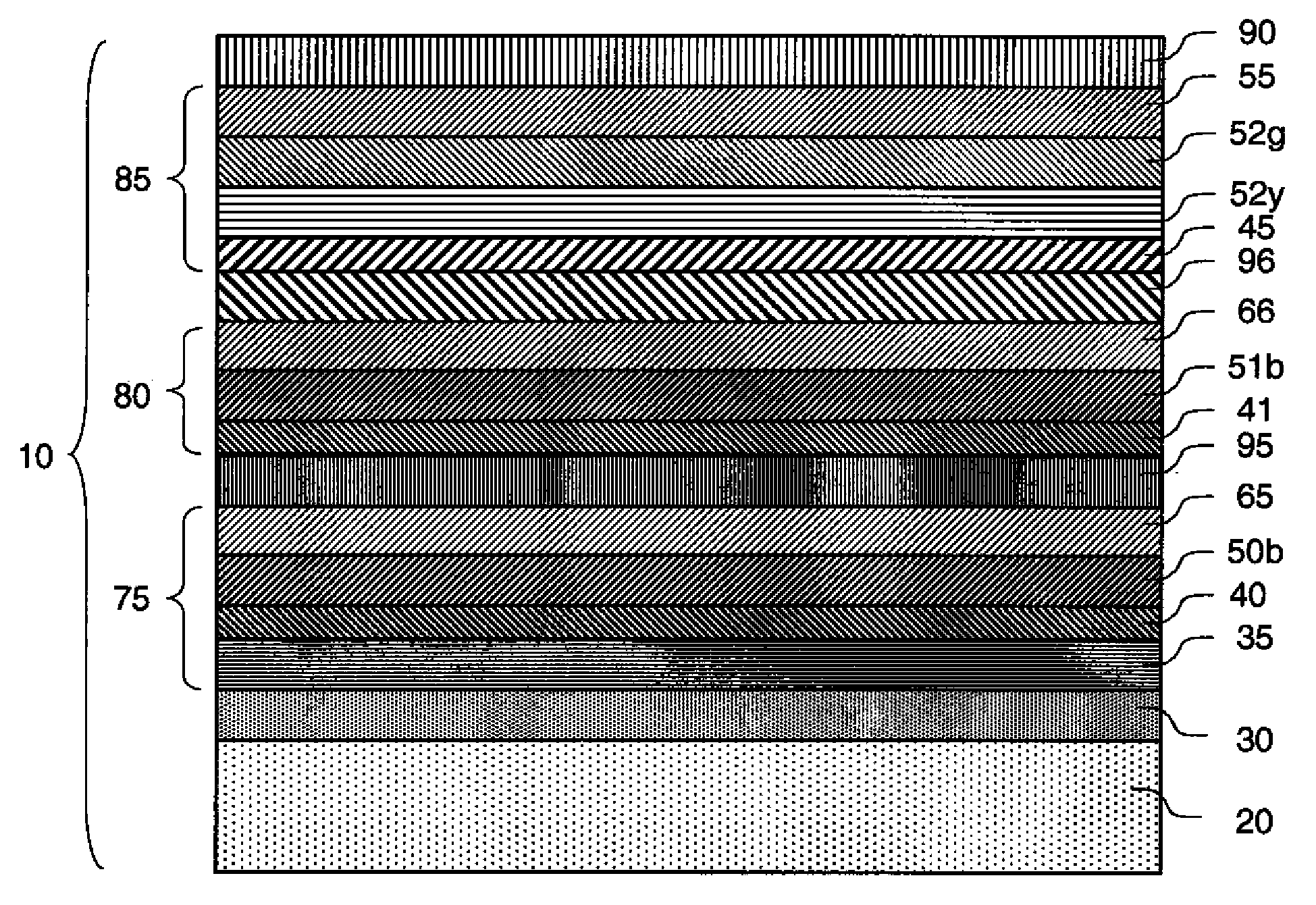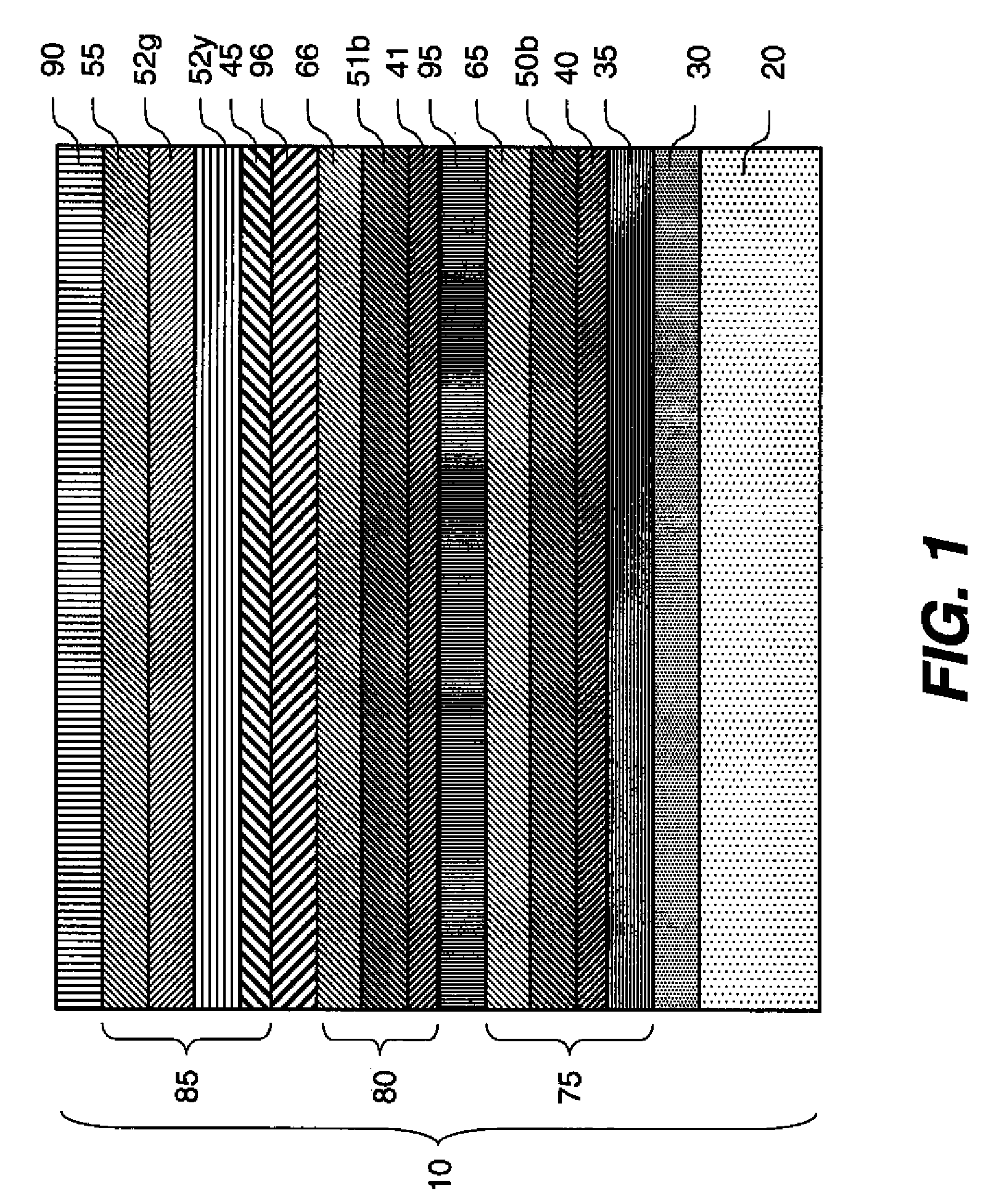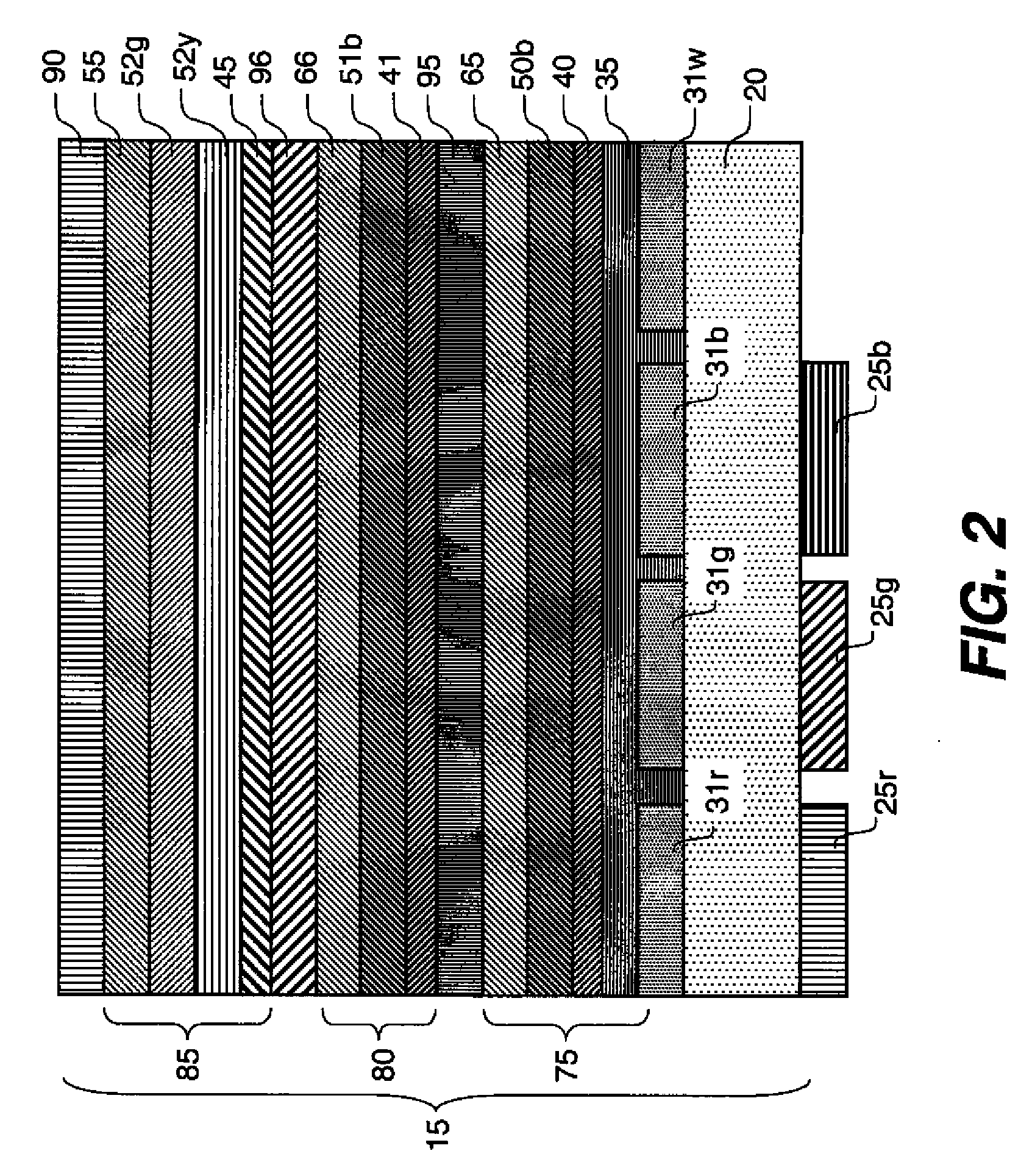High-color-temperature tandem white OLED
- Summary
- Abstract
- Description
- Claims
- Application Information
AI Technical Summary
Benefits of technology
Problems solved by technology
Method used
Image
Examples
example 1
Comparative
[0098]1. A clean glass substrate was deposited by sputtering with indium tin oxide (ITO) to form a transparent electrode of 60 nm thickness.[0099]2. The above-prepared ITO surface was treated with a plasma oxygen etch.[0100]3. The above-prepared substrate was further treated by vacuum-depositing a 1 nm layer of hexacyanohexaazatriphenylene (CHATP) as a hole-injecting layer (HIL).
[0101]4. The above-prepared substrate was further treated by vacuum-depositing a 130 nm layer of 4,4′-bis[N-(1-naphthyl)-N-phenylamino]biphenyl (NPB) as a hole-transporting layer (HTL).[0102]5. The above-prepared substrate was further treated by vacuum-depositing a 20 nm yellow light-emitting layer including 48% NPB (as host) and 50% 9-(1-naphthyl)-10-(2-naphthyl)anthracene (NNA) as a co-host with 2% yellow-orange emitting dopant diphenyltetra-t-butylrubrene (PTBR).
[0103]6. The above-prepared substrate was further treated by vacuum-depositing a 20 nm blue light-emitting layer including 85% NNA hos...
example 2
Inventive
[0113]1. A clean glass substrate was deposited by sputtering with indium tin oxide (ITO) to form a transparent electrode of 60 nm thickness.[0114]2. The above-prepared ITO surface was treated with a plasma oxygen etch.[0115]3. The above-prepared substrate was further treated by vacuum-depositing a 10 nm layer of CHATP as a hole-injecting layer (HIL).[0116]4. The above-prepared substrate was further treated by vacuum-depositing a 163 nm layer of NPB as an HTL.[0117]5. The above-prepared substrate was further treated by vacuum-depositing a 30 nm blue light-emitting layer including 95% NNA host with 5% BED-1 as blue-emitting dopant.[0118]6. A 40 nm mixed electron-transporting layer was vacuum-deposited, including 49% Bphen and 49% (8-quinolinolato)lithium (LiQ) as co-hosts, with 2% Li metal.[0119]7. The above-prepared substrate was further treated by vacuum-depositing a 10 nm layer of CHATP as a p-type doped organic layer (HIL).[0120]8. The above-prepared substrate was further...
example 3
Inventive
[0129]An OLED device was constructed as described above for Example 2 except that the hole-transporting layer thicknesses were varied as follows:[0130]4. The above-prepared substrate was further treated by vacuum-depositing a 200 nm layer of NPB as an HTL.[0131]8: The above-prepared substrate was further treated by vacuum-depositing a 10 nm layer of NPB as an HTL.[0132]12. The above-prepared substrate was further treated by vacuum-depositing a 20 nm layer of NPB as an HTL.
PUM
 Login to View More
Login to View More Abstract
Description
Claims
Application Information
 Login to View More
Login to View More - R&D
- Intellectual Property
- Life Sciences
- Materials
- Tech Scout
- Unparalleled Data Quality
- Higher Quality Content
- 60% Fewer Hallucinations
Browse by: Latest US Patents, China's latest patents, Technical Efficacy Thesaurus, Application Domain, Technology Topic, Popular Technical Reports.
© 2025 PatSnap. All rights reserved.Legal|Privacy policy|Modern Slavery Act Transparency Statement|Sitemap|About US| Contact US: help@patsnap.com



